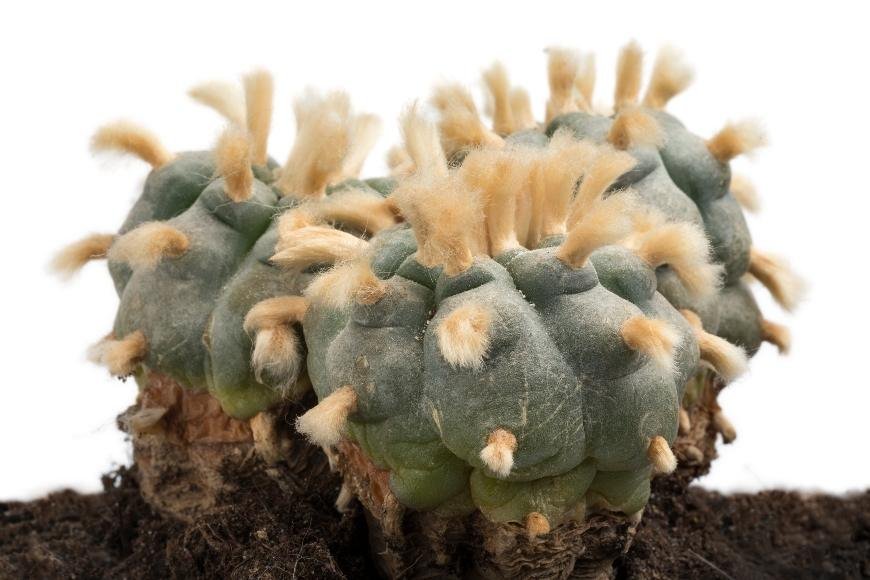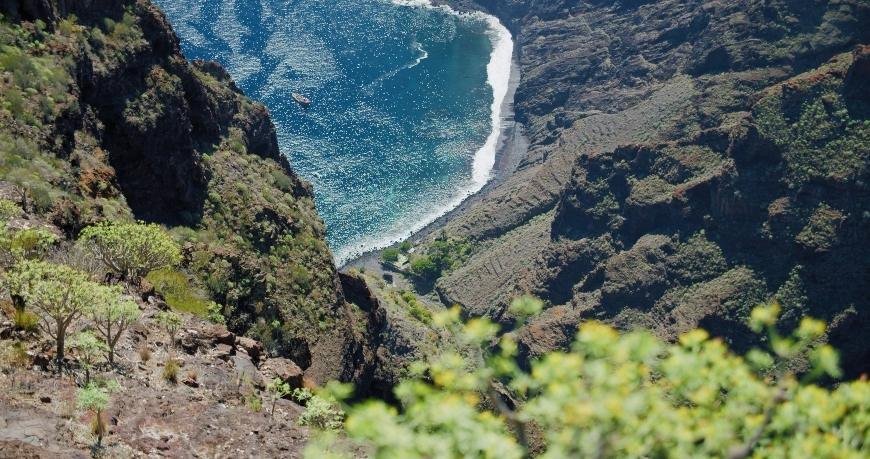How to Grow Peyote?
Learn how to grow Peyote? with our comprehensive guide covering soil preparation, planting, and harvesting this fascinating spineless cactus.

How to grow Peyote? This fascinating plant, Lophophora williamsii, is a spineless cactus native to Mexico and southwestern Texas. Known for its psychoactive properties and use in traditional peyote ceremonies, it has gained popularity among those interested in cultivating unique plants. In this blog post, we'll uncover the secrets to cultivating peyote in your own home.
We'll discuss how to choose the perfect location for your peyote plants, taking into consideration their natural habitat and preferences. Soil preparation is essential for healthy growth; therefore, we'll delve into creating an ideal soil mix that replicates the conditions found in nature.
From planting techniques to proper watering and fertilizing practices, our guide on how to grow Peyote will cover everything you need to know about nurturing these intriguing cacti. We'll also address common pests and diseases that may affect your plants' health.
Finally, once your mature peyote plants are ready for harvest, we’ll provide insights on how best to collect the prized dried peyote buttons while ensuring future growth. Stay tuned as we embark on this journey through the world of peyote cultivation!
Table of Contents:
- Choosing the Perfect Spot
- Soil Preparation
- Storing Peyote Buttons: How to Keep Your Cactus Treasures Fresh
- FAQs in Relation to How to Grow Peyote?
- Conclusion
Choosing the Perfect Spot

When growing peyote, location is key - these small, spineless cacti require specific conditions to thrive.
- Sunlight: Peyote needs indirect sunlight, so choose a partially shaded area with morning or late afternoon sun.
- Temperature: Keep your peyote plants in a temperature range of 60-80°F (15-27°C) during the day and slightly cooler at night around 50-60°F (10-15°C).
- Indoor vs. Outdoor: If your climate isn't suitable for outdoor growth, consider indoor cultivation with containers and grow lights that mimic their natural environment. Otherwise, choose a well-draining soil mix and ensure proper spacing between plants to avoid overcrowding.
By providing optimal environmental conditions for these unique cacti species, you'll be well on your way to a successful peyote garden.
Soil Preparation
Create the ideal environment for your peyote plants by preparing the soil correctly - they need a slightly acidic pH between 6.0 and 7.0, with well-draining sandy ground as their base.
Mix equal parts of coarse sand, perlite or pumice, and regular potting soil to create the perfect growing medium.
- Test the pH: Use a soil test kit to check if your mixture falls within the ideal range for peyote cultivation.
- Fertilize sparingly: Over-fertilizing can harm your peyote plants, so use a diluted liquid fertilizer specifically designed for cacti once every four weeks during their active growing season (spring through summer).
If your soil's pH is too high (alkaline), lower it by adding small amounts of sulfur or aluminium sulfate until you reach the desired level. If it's too low (acidic), add some limestone or wood ash to raise its pH gradually.
When planting peyote indoors, use shallow pots with drainage holes to prevent root rot caused by excess water retention in deeper containers.
Planting Peyote
Grow peyote from seeds or cuttings with patience and care.
For seeds, use well-draining cactus soil mix and cover lightly with sand or fine gravel.
For cuttings, allow them to callus over for a week before planting.
- Germination period: Peyote seeds take 2-4 weeks to germinate.
- Ideal temperature: Aim for 70°F (21°C) to 85°F (29°C).
- Cutting size: Cuttings should be at least one inch in diameter.
- Ideal spacing: Space multiple plants at least six inches apart.
Remember, peyote is slow-growing and requires patience, but with proper care, your plants will develop into mature specimens with potent psychoactive properties.
Watering and Fertilizing
Don't drown your peyote - water sparingly every 2-3 weeks when the soil is dry and use well-draining soil.
Low-nitrogen fertilizer, diluted at half strength, should be applied every 6-8 weeks during active growing periods.
A boost in calcium content can be achieved by adding minerals like gypsum or limestone to the planting medium.
Remember not to fertilize during winter dormancy.
Controlling Pests and Diseases
Don't let pests and diseases harm your peyote plants - monitor for issues and take action when necessary.
- Combat aphids: Use natural remedies like neem oil or insecticidal soap to get rid of these tiny sap-suckers.
- Prevent root rot: Ensure adequate drainage by adding perlite or sand to your soil mix.
- Stay clean: Keep the area around your plants free of debris to discourage pests from settling in.
- Avoid overwatering: Peyote loves well-draining soil, so don't let it get waterlogged.
- Inspect regularly: Check for signs of pests or diseases so you can address them early on.
- Treat promptly: Act quickly to treat any issues with natural or chemical solutions.
By following these guidelines, you can maintain the health of your peyote cactus and enjoy its potent dried buttons for years to come. And remember, a well-cared-for peyote cactus will reward you with potent dried buttons for years to come.
Harvesting Peyote
Harvesting peyote requires precision and care, so make sure to use clean tools and cut the button off gently without damaging the surrounding tissue.
- Timing: Harvest when the button is firm and at least 1 inch (2.5 cm) in diameter.
- Don't over-harvest: Leave some buttons behind to allow the plant to continue growing healthily.
- Regeneration: Peyote plants can regenerate new growth after being harvested if treated properly.
After harvesting, store the buttons in a dry environment to preserve potency and freshness.
- Dry thoroughly: Air-dry the buttons completely in a well-ventilated area away from direct sunlight.
- Choose proper storage containers: Store dried peyote buttons in an airtight container such as glass jars or vacuum-sealed bags.
- Maintain cool temperatures: Keep your stored peyote in a cool, dark place like a cupboard or pantry.
Following these steps will ensure that you have potent, fresh peyote on hand whenever you're ready for its unique psychedelic experience.
Storing Peyote Buttons: How to Keep Your Cactus Treasures Fresh
Congratulations on harvesting your peyote buttons. Now, it's time to store them properly to preserve their potency and freshness.
First, make sure your peyote buttons are completely dry before storing them in an airtight container to protect against moisture, oxygen exposure, and contaminants.
- Store in a cool, dark place: Keep your container in a consistently cool area (below 70°F/21°C) away from temperature fluctuations.
- Avoid light exposure: Light can break down active compounds, so keep your peyotes away from direct sunlight or bright light.
- Label and date your storage container: Keep track of the age and potency of your peyote buttons by labeling the container with the harvest date.
By following these guidelines, you can ensure that your harvested peyote buttons remain potent and fresh for up to several years. So take care of your cactus treasures and enjoy their mystical properties whenever you're ready.
FAQs in Relation to How to Grow Peyote?

Can I Grow Peyote Legally?
The legality of growing peyote varies depending on your location. In the United States, it is illegal to cultivate or possess peyote unless you are a member of the Native American Church and use it for religious purposes. Check your local laws before attempting to grow this plant.
How Hard Is It to Grow Peyote from Seed?
Growing peyote from seed can be challenging due to its slow growth rate and specific environmental requirements. However, with patience, attention to detail regarding temperature control and moisture levels, success is achievable over time.
What Are the Best Conditions for Growing Peyote?
The ideal conditions for growing peyote include:
- A warm environment with temperatures between 70-90°F (21-32°C).
- Bright but indirect sunlight.
- Well-draining soil mix containing sand and perlite.
- Moderate humidity levels around 50%.
How Do You Grow Peyote Fast?
Growing peyote quickly requires optimal conditions such as well-draining soil, proper watering, and adequate light exposure. Using seed germination techniques, like scarification or soaking seeds in water overnight, can also speed up growth.
Remember, peyote is a spineless cactus that prefers a dry environment. Peyote loves well-draining soil and can be susceptible to root rot if overwatered. Peyote buttons can be harvested and dried for use in peyote ceremonies or as a recreational drug.
Conclusion
Growing Peyote can be a rewarding experience for recreational drug users, and this guide on "How to grow Peyote?" can help you cultivate your own supply of this powerful hallucinogen. Choose a suitable location with well-draining soil, plant the cactus carefully, water and fertilize it regularly, control pests and diseases, harvest the buttons when mature, and store them properly for future use. With patience and care, you can become a successful Peyote cultivator!


































































































































